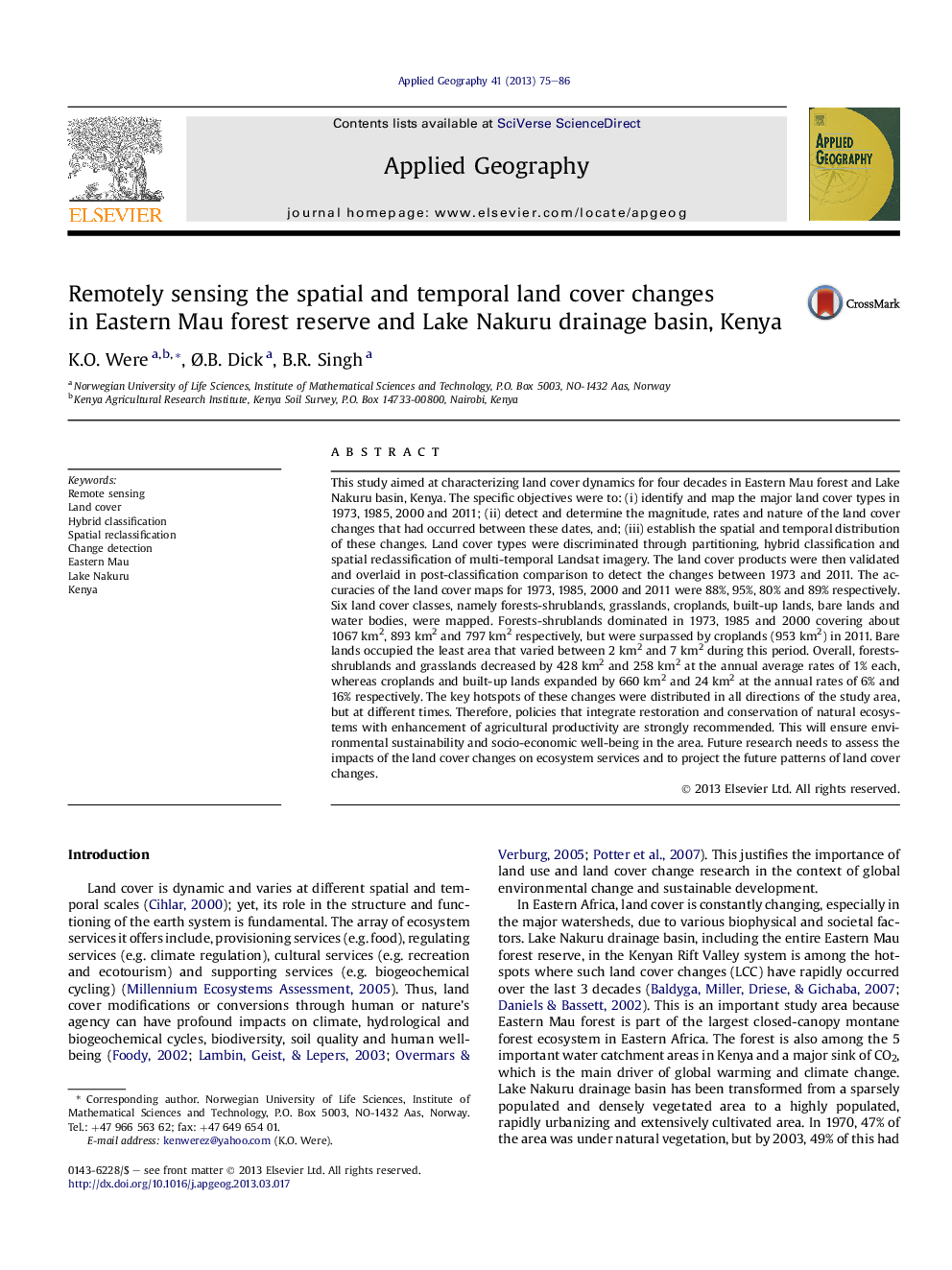| Article ID | Journal | Published Year | Pages | File Type |
|---|---|---|---|---|
| 83246 | Applied Geography | 2013 | 12 Pages |
•We examine land cover changes in Eastern Mau forest and Lake Nakuru basin, Kenya for 38 years.•The method is based on partitioning, hybrid classification and spatial reclassification of Landsat data.•The highest losses are for the forests-shrublands followed by grasslands.•The highest gains are for the croplands followed by built-up lands.•We recommend integrated environmental and agricultural policy formulation process.
This study aimed at characterizing land cover dynamics for four decades in Eastern Mau forest and Lake Nakuru basin, Kenya. The specific objectives were to: (i) identify and map the major land cover types in 1973, 1985, 2000 and 2011; (ii) detect and determine the magnitude, rates and nature of the land cover changes that had occurred between these dates, and; (iii) establish the spatial and temporal distribution of these changes. Land cover types were discriminated through partitioning, hybrid classification and spatial reclassification of multi-temporal Landsat imagery. The land cover products were then validated and overlaid in post-classification comparison to detect the changes between 1973 and 2011. The accuracies of the land cover maps for 1973, 1985, 2000 and 2011 were 88%, 95%, 80% and 89% respectively. Six land cover classes, namely forests-shrublands, grasslands, croplands, built-up lands, bare lands and water bodies, were mapped. Forests-shrublands dominated in 1973, 1985 and 2000 covering about 1067 km2, 893 km2 and 797 km2 respectively, but were surpassed by croplands (953 km2) in 2011. Bare lands occupied the least area that varied between 2 km2 and 7 km2 during this period. Overall, forests-shrublands and grasslands decreased by 428 km2 and 258 km2 at the annual average rates of 1% each, whereas croplands and built-up lands expanded by 660 km2 and 24 km2 at the annual rates of 6% and 16% respectively. The key hotspots of these changes were distributed in all directions of the study area, but at different times. Therefore, policies that integrate restoration and conservation of natural ecosystems with enhancement of agricultural productivity are strongly recommended. This will ensure environmental sustainability and socio-economic well-being in the area. Future research needs to assess the impacts of the land cover changes on ecosystem services and to project the future patterns of land cover changes.
